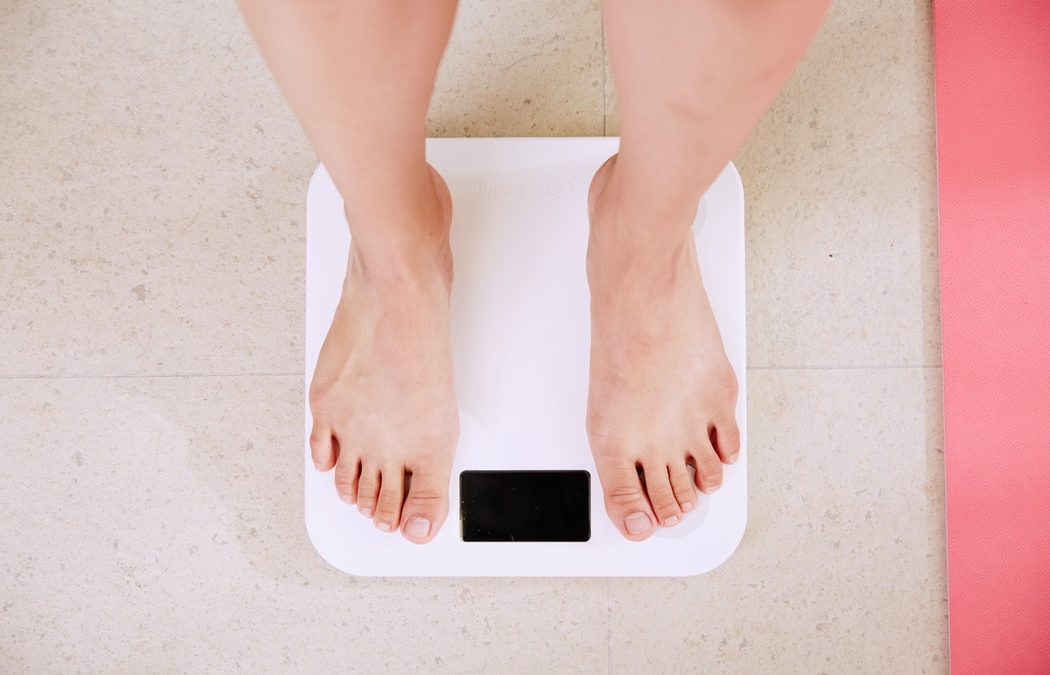Are you curious about how many calories you need to eat in a day? At MNT, our dietitians have a few tricks for assessing calorie needs. Most often, we rely on our clinical expertise, years of experience, and scientifically validated calculations to estimate needs. We adjust upward or downward, based on a client’s progress toward her goals. Whenever possible, though, we recommend resting metabolic rate testing.
Lisa (name changed for privacy) is a 38-year-old mom of 3. She was frustrated after purchasing several online weight loss programs, none of which had been successful. When we reviewed her food log, we found it somewhat surprising that she wasn’t losing weight. It was possible that she was underestimating portion sizes, but her diet was very healthy overall. She was also very active.
She agreed to have her resting metabolic rate tested, and we found that her calorie needs were about 300 less than her estimates from online calculators. Based on this and other symptoms, we recommended that she adjust her food intake and ask her doctor about thyroid testing. She was found to have hypothyroidism and started medications. We’re happy to report that she’s seeing weight loss AND greater energy, after years of frustration.
So what is resting metabolic rate testing, and should you schedule an appointment? Read on for more details.
What is Resting Metabolic Rate?
Metabolism is a complicated series of reactions that sustains human life. One of these reactions is turning the food that we eat into energy. Our bodies are very busy, even when we’re at rest. Even actions that we take for granted, like breathing and thinking, require energy in the form of calories. The calories our bodies burn while we’re at rest is known as our resting metabolic rate (RMR). You may also hear it called basal metabolic rate.
Your resting metabolic rate is the minimum amount of calories your body needs just to function. In fact, resting metabolic rate is the biggest piece of the equation that determines your total daily energy expenditure (TDEE), which is the total number of calories you would need to eat each day to maintain your weight. Your TDEE includes RMR, plus a few other factors:
- Physical activity, including:
- Exercise – any activity you do intentionally, with the purpose of being more fit
- Lifestyle – activity you get in your day-to-day life. For example, construction workers usually burn more calories per day than accountants because their jobs are more physically demanding.
- Non-exercise activity thermogenesis (NEAT) – calories you burn when you are jittery—tapping your toe, pacing, wiggling, you name it.
- Thermic effect of food (TEF) – calories are those that are burned in the process of digesting the foods that you eat.
When we know your resting metabolic rate, we’re better able to pinpoint your daily calorie needs. We plug this value into an equation to help estimate your TDEE.
Does the Resting Metabolic Rate Test Hurt?
We perform the resting metabolic rate test in our Clayton office.
After settling comfortably into a chair, we clamp your nostrils closed with a padded plastic clip. From there, you simply breathe into a handheld device via a plastic mouthpiece for approximately 8-10 minutes. The device is able to determine your resting metabolic rate by measuring the amounts of oxygen and carbon dioxide in your breath.
You can’t speak and have to remain fairly still for the duration of the test. However, you’re more than welcome to scroll through your phone to pass the time.
The test is mostly painless. Some people find the nose pinching mildly uncomfortable, and you can expect to drool a bit (we’ll give you some tissues in case any escapes the mouthpiece). In fact, the most painful part of the test is the hours leading up to it. The test requires that you pass on coffee (eeeeek!), food, and drink for 5 hours before fasting, and exercise for 12 hours before testing. For those reasons, we recommend scheduling your resting metabolic rate test first thing in the morning.
The best part? You receive your results immediately. In just a few minutes, you can take the guesswork out of how many calories per day you need.
What is the Cost, and How Can I Schedule?
The Resting Metabolic Rate test costs $75. For best results, we recommend booking a couple of sessions with one of our dietitians after your test to make a game plan and help you reach your goals. Packages start at $250.
Click here to book your resting metabolic rate test today!

